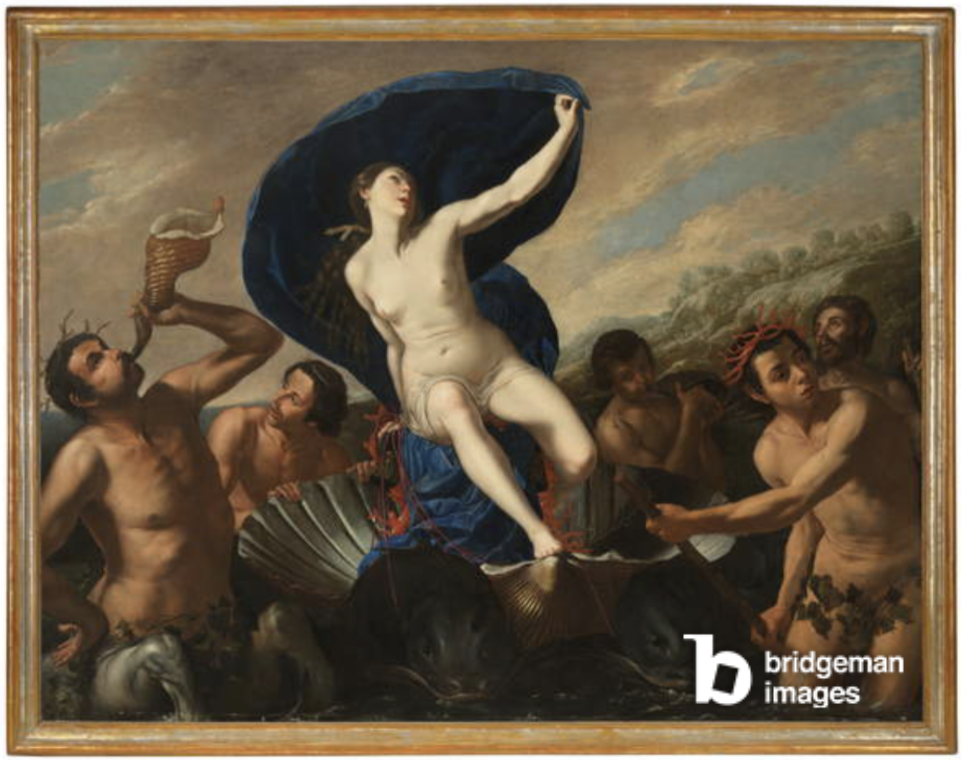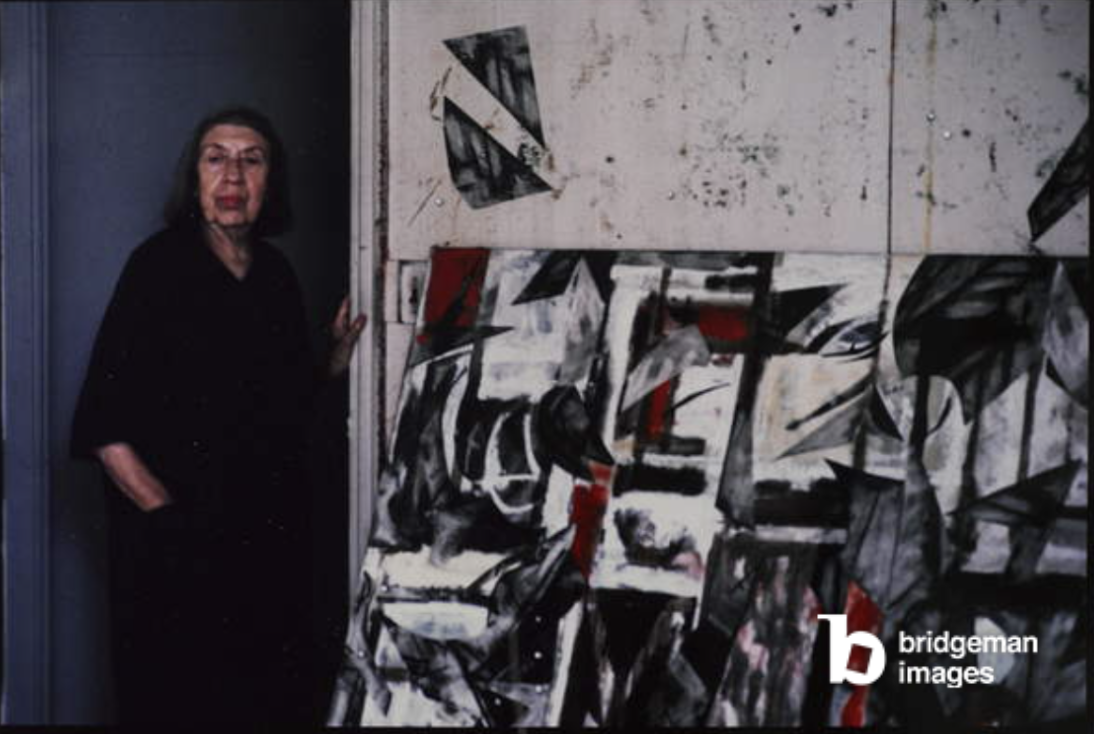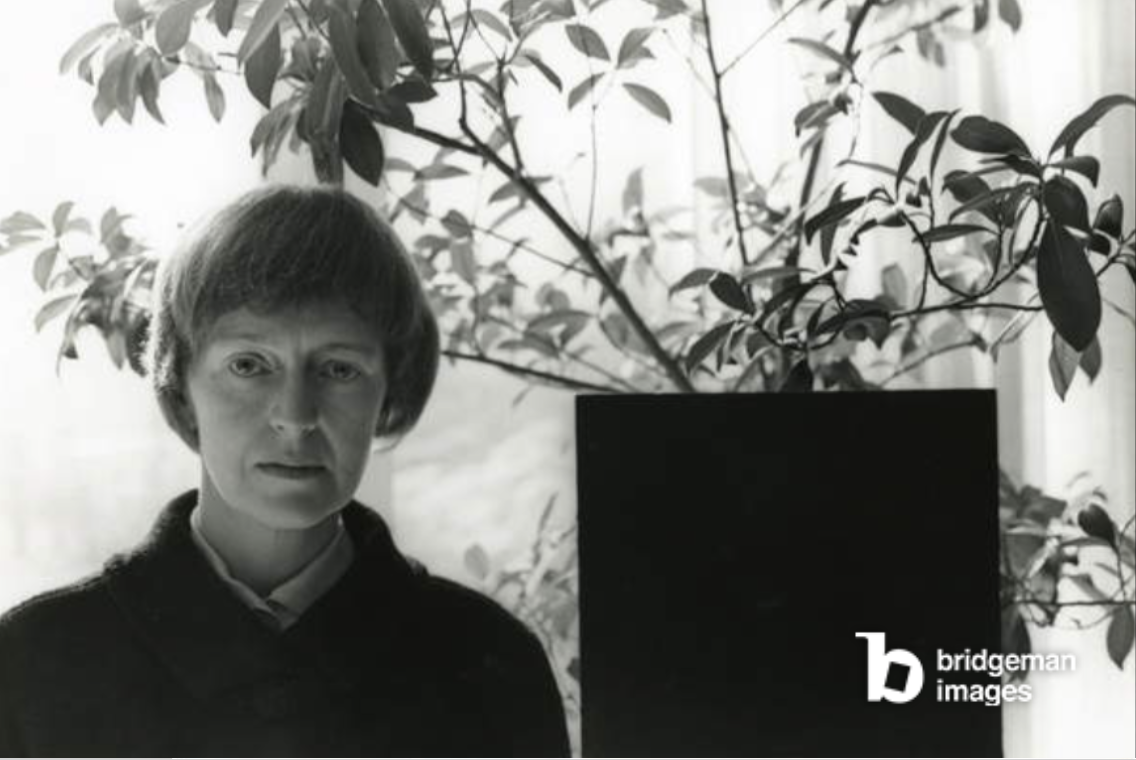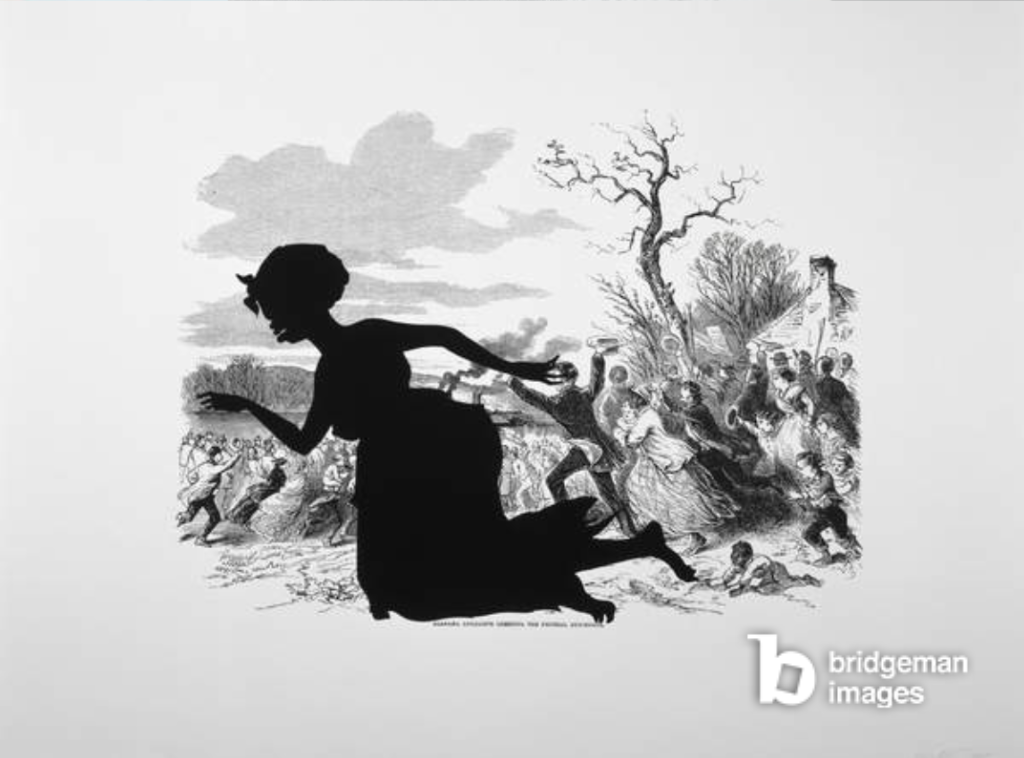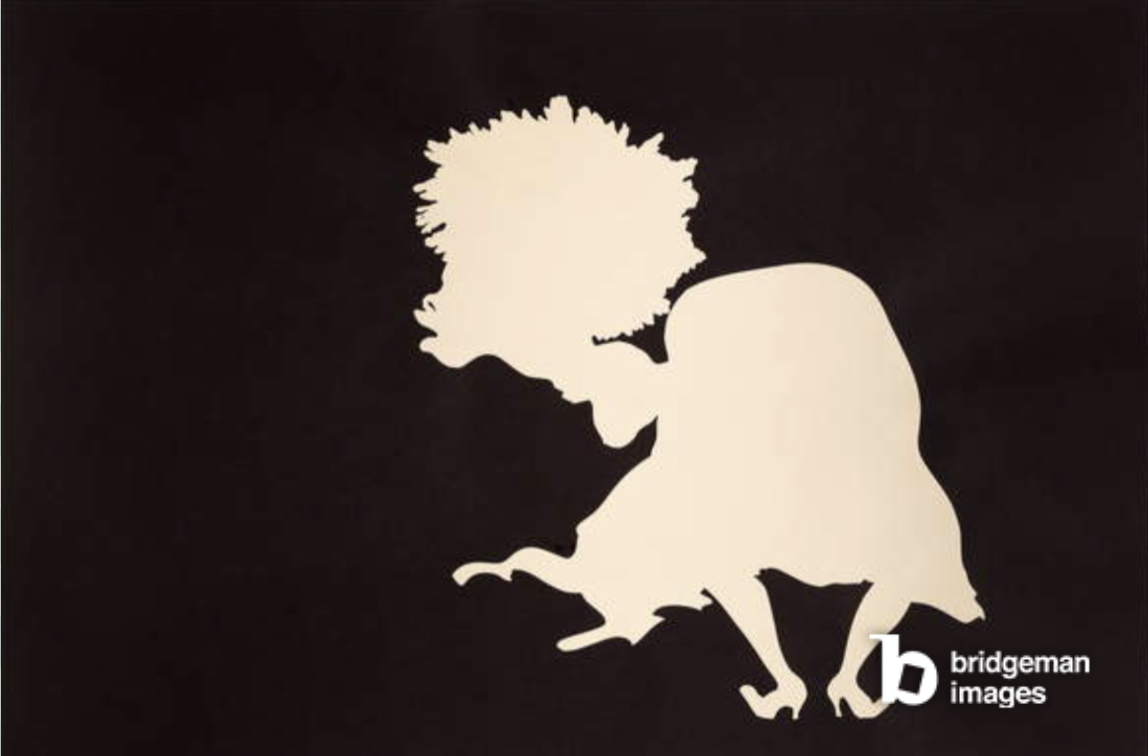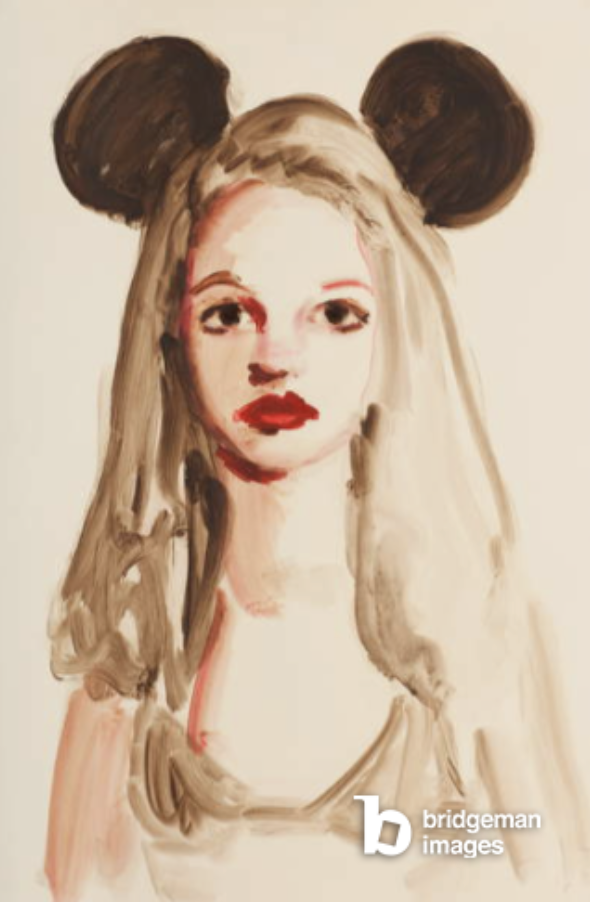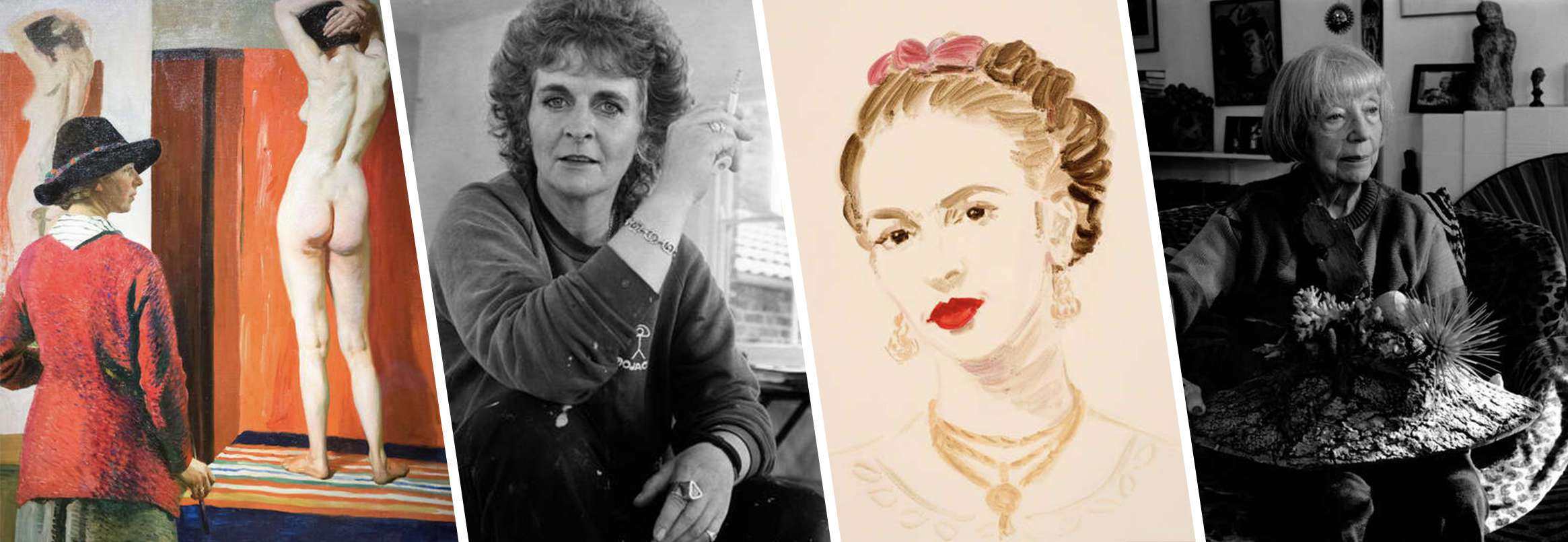
International Women's Day
Celebrating what is technically the 111th International Women’s Day, Bridgeman Images is proud to showcase its wonderful collection of women artists. Following the first theme promoted by the UN of “sticking to the past and planning for the future”, this article will introduce a small series of female artists and images from across history, following women artists who belong to the past and future of art. A small piece of writing like this will never be able to fully summarise and quantify the importance and brilliance of these artists and their work, but aims to demonstrate the ways they explored their realities and identity, through the portrayal of their emotions and the play of their imagination.
Click here to view our Women Artists Lightbox, or read more about several of our featured artists below.
'My dreams were all my own; I accounted for them to nobody;
they were my refuge when annoyed—my dearest pleasure when free.'
- Mary Wollstonecraft
Artemisia Gentileschi b. 1593
Going back to seventeenth-century Italy there were very few opportunities for women to establish themselves as professional artists. Despite this, Artemisia Gentileschi gained herself recognition through the beauty and brilliance of her paintings. Working in the Baroque style that had become popular after influence from the dramatic paintings made by Caravaggio, Gentileschi created works full of character and tension, often centring around mythological and biblical subjects.
Many of the stories explored in Gentileschi’s paintings suggest hidden critiques about gender relationships, and centre on heroines and female figures. Despite working at a time when the
professional landscape was nearly completely dominated by men, Gentileschi was the first woman to become a member of the Accademia di Arte del Disegno in Florence, by stunning her contemporaries with the skill of her brush and her fascinating compositions.
Still today Gentileschi’s paintings are a marvel for the eye, as we are enraptured by the lifelike look of her subjects and the mystery that is to be revealed in the spaces between them.
Eileen Agar b. 1899
She was a British-Argentinian painter and photographer who was considered a part of the British
Surrealist movement in the mid-twentieth century. The Surrealists adapted their art to look inwards, at the inner world created by the mind. In many ways, this was an attempt to free the artist's imagination and create personal works, independent of the conventions of art.
Through this inner perspective, Surrealists could be anarchistic. Their art was rendering the world in the manner they thought fit, allowing for themes and ideas about identity and gender to be explored.
Agar had a more subversive role in the movement- which was no doubt partly due to her being a female in a group of which the majority were men. What made Agar more distinct from the others was her application and enthusiasm for abstraction and geometry, which flowed into her works and created something altogether independent and harmonious.
Agar’s wrapped ‘angel of anarchy’ is a perfect example of her interests in identity and her diverse application of material and style. In the sculpture, a face is formed from a mélange of materials and forms. They seem to be randomly moulded together, appreciating that an individual and their imagination is made of many forms and textures which grow naturally and freely from one’s independent personality.
Lee Krasner b. 1908
Has often been overshadowed by her husband Jackson Pollock but is an artist who deserves as much respect and admiration for her art. Along with her husband, Lee Krasner was a monumental figure in the abstract expressionist movement of the '50s. Using a mixture of materials in her work ranging from charcoal, oil paint and collage. It is impossible to package Krasner’s work into a style of painting or artmaking.
The unpredictable and ever-changing nature of Krasner’s paintings created a reflection or even an
extension of her emotional landscape. The paintings are concerned with expression and feeling rather than subject matter, and the variety of her work reveals the constant volatile condition of our
emotional experience in life. Nearly every emotion is applied and channelled through her art practice, even those of a more destructive nature as Krasner was compelled to destroy some of her works which displeased her, meaning only a small amount of her art is surviving today.
Later in her career, Krasner began to make works predominantly using collage, by cutting up and
ripping her paintings and then reforming them in new patched together compositions. After cleaning out her old studio Krasner stumbled upon numerous paintings and drawings she had completed in her earlier life. Krasner then proceeded to cut them up and reconfigure them into new works of art, challenging artistic communication and meddling with the correct course of time.
Anne Truitt b. 1921
Was inspired by the abstract expressionists such as Krasner and likewise committed in the destruction of her art. Spending her childhood in Maryland and most of her adult life working and living in Washington DC, Truitt has become well known for her art practice and art literature. Often associated with minimalist art, Truitt began to apply abstract concepts to objects and sculptures.
The famous and enigmatic motif of the rectangular pillar made from wood, painted over in acrylic is
repeated time and time again in Truitt’s sculptural pieces, with each pillar shifting through numerous variations of colour and size. The pillars usually appear as a single block of colour, smooth and organic, with no suggestion or trace of the artist’s hand and brush. For Truitt, colour, and shape were metaphors for thought, and their relationship created an expression of her experience. They worked ‘To make what feels to me like reality'.
This simplification of experience into basic conceptual form is a process adopted by the minimalists working around the same time. Yet the minimal and reduced ‘reality’ Truitt creates does not seem entirely universal and relatable, but more personal and unreachable to the spectator. Truitt’s works, therefore, hold a mystery and importance only fully understood by their creator, reflecting on our personal conceptions and interaction with objects, colour and meanings, which form the foundations of our perception of reality.
Margaret (“Maggi”) J. Hambling b. 1945
Is a British painter and sculptor best known for her expressive portraits and sublime depictions of
landscapes and seascapes. Hambling’s paintings centre on the natural world in a style reminiscent of Turner and Shan Sui art; the Chinese practice of landscape painting. Within her painting, the might of nature is shown in its full power, with many of the works depicting storms and waterfalls.
Recognised for her talent in portraiture Hambling also became the first resident artist at the National Gallery in London and has completed a vast array of expressive portraits including other artists and politicians. Hambling has become well known for her memorial sculptures of the literary giants, Oscar Wilde and Mary Wollstonecraft. The memorials have however been received with both praise and controversy.
The memorial of Wilde particularly became a point of concern as the flamboyant character is positioned with a cigarette in his right hand, whilst he raises his head out of a dark tomblike bench.
This part of the sculpture has been removed so many times by members of the public that it is no longer installed in the work.
The monumental Scallop on Aldborough beach also created an outcry from the public but showcases Hambling’s talent of merging subjects with the natural world. The scallop is a tribute to the composer Benjamin Britten who lived in this seaside town and channels the surrounding elements- wind, sea and stone, to make music out of nature.
Barbara Kruger b. 1945
Has been a widely influential American conceptual artist who has used images to create powerful criticisms about identity within our modern consumer society. Kruger often fuses images with text to convey her cultural critiques, examining stereotypes and behaviour in mass media.
The images and their texts are distinct and bold, using standout colour contrasts like Red and Black.
Each message is direct, forcing the viewer to consider their meaning and the relation it has with their lives in a consumerist culture. Living and working between New York and LA, Kruger’s work and life are majorly concerned with constructed female stereotypes across all of America, playing with the conventions that have passed from fiction into reality, to dominate the lives of the public today.
‘I replicate certain words and watch them stray from or coincide with the notions of fact and fiction.’
Kara Walker b. 1969
Has been regarded as one of the most important female artists to explore issues around race and
gender. In her works, Walker uses silhouettes and iconography inspired or created by images from
history which depict enslaved African Americans. By doing so Walker creates a nightmarish image
and world, that channels the violence and brutality of American racism and inequality.
Throughout her career, Walker has confronted our understanding of American history and the way racism is perceived with a ‘soft focus' that avoids the real terror and reality. The silhouettes are normally degrading stereotypes reappropriated from the past, which is a process that highlights the prevention of history, as slavery discouraged African Americans from having their own images, their own history.
The figures are blacked out not just as a symbol of racism but because of the erasure of identity that happened as a result of slavery. The folklore and fantasy element of Walker's work revives a sense of a past that was relayed through people and their stories, not the history books, making her art more magical- creating images which are terrifying and beautiful at the same time.
‘I have no interest in making a work that doesn't elicit a feeling. To be a truly conscientious artist, you have to look at what's not working and challenge it.’
Annie Kevans b.1972
Is another artist who has courted controversy with her work, through subverting and challenging our ideas of history and the figures who shaped it. Kevans' most provocative work is a series of paintings depicting political and cultural figures as children. This series includes re-configurations of history’s most infamous and detested figures like Adolf Hitler.
Through this reimagination, Kevans creates an image of innocence and youth, engendering thought and emotional sympathy with the figure, regardless of the knowledge and prejudice we have ascribed to him today. The paintings portray Kevan’s belief that an individual’s identity is a shifting temporary construction, therefore she is challenging the fixed identities we grant to cultural figures, complicating our perception of them.
In her paintings of women, Kevans again constructs an imagined image of them as children. Yet the figures are often semi-nude, making a disturbingly effective point on the sexualisation of youth and women in popular culture. Overall, her reimagined portraits reveal or makeup visions and lives of the figures which were unseen and unconsidered. This not only affects our perception of the figures but meditates on the construction of identity which is completely dependent on the imagination and representation of the subject, one that is able to change according to the will of our own imagination.
Jasmine de Silva
Is a London based photographer and director who combines ‘retrofuturism’ and diamond-studded
female bodies, to create a satirical portrayal of the modern quest for physical perfection. The ideal to be perfect and beautiful has been represented in a comical fashion in the work by de Silva in her film, ‘how to build your human’, which depicts a strange, oversaturated world where women are mechanical beings, operated on and cleaned, tuned and modified with paint or ‘spare body parts’.
De Silva ridicules standards of beauty within a modern culture by envisioning this cosmetic human
workshop. Yet the work still sustains a slightly alluring aesthetic and feels like an evolution of pop art were now the human subjects have become the works of art themselves. De Silva has gained
recognition and won numerous awards in the past few years, and her work is a fresh and creative
approach to challenging ideals and conventions of beauty and female identity in our modern consumer world.



